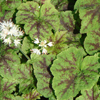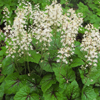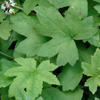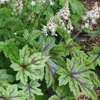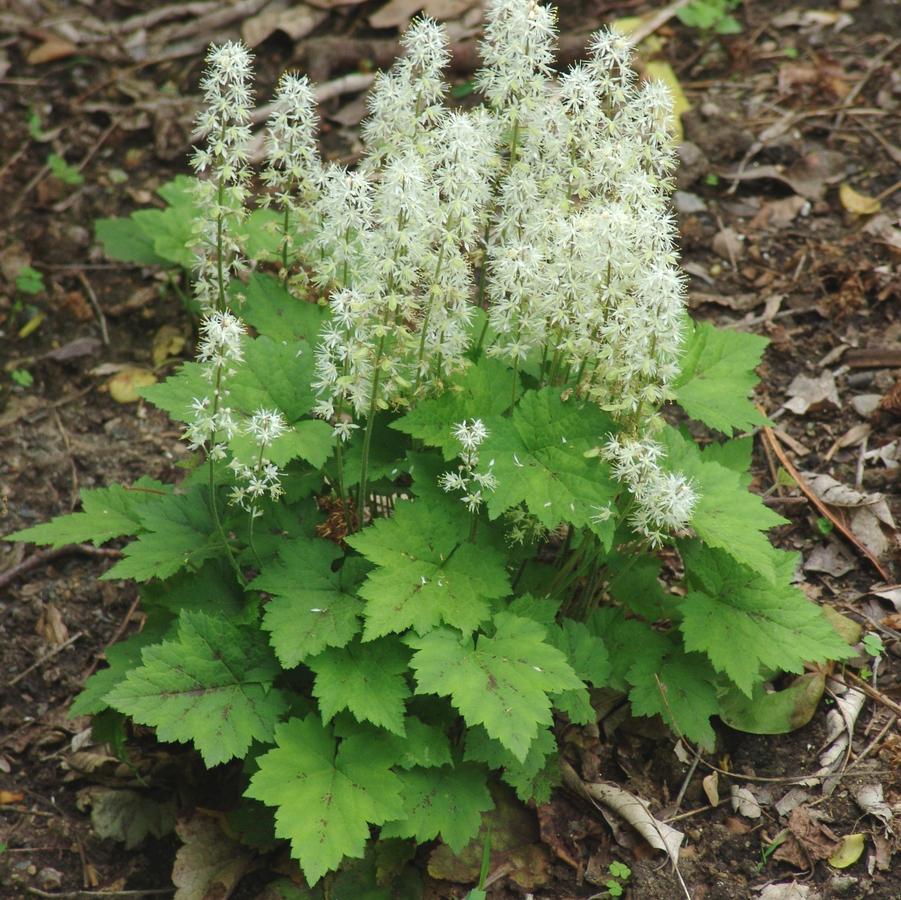
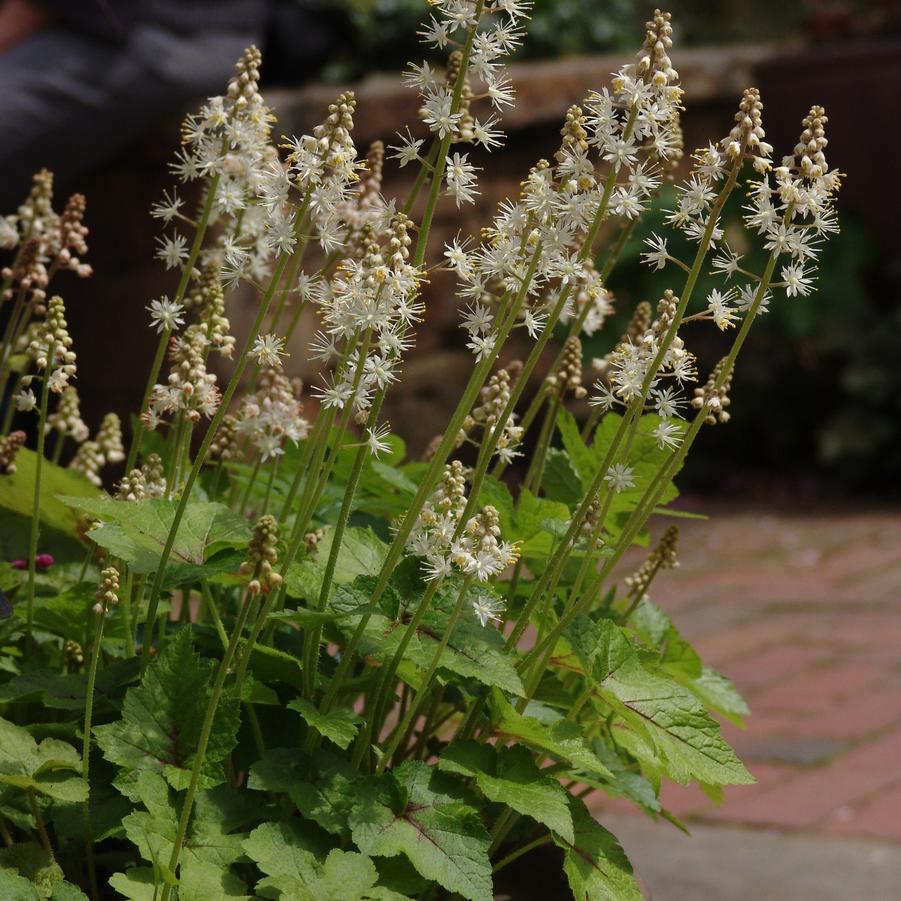
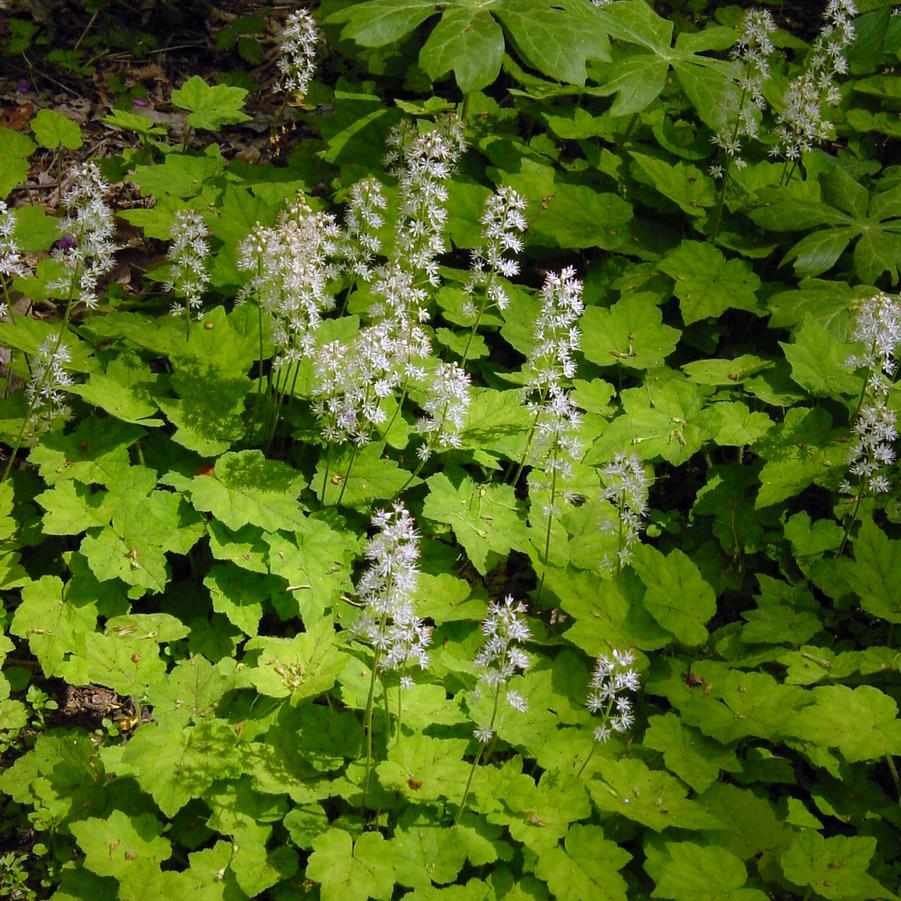



Plant Calculator
Enter the approximate length and width of the area you will be planting and click 'Calculate' to determine how many Tiarella cordifolia you will need.
Correct and successful spacing is complex and depends on project conditions. We encourage you to call us at 877-ECO-PLUG for project specific recommendations and further assistance.
Tiarella cordifolia
foamflower
- Category: Perennial, Native
- Hardiness Zone: 4-8
- Height: 8-12 Inches
- Spread: 12-18 Inches
- Spacing: 12 Inches
- Bloom Color: White
Foamflowers are commonly found in the woods of eastern North America, but not nearly often enough in gardens. They are easy to grow and many will spread when given moist soil high in organic matter and shade. In the early spring fairy wand flowers of white or light pink appear over green, deeply veined leaves which are often tinged with burgundy.
Click here to download technical information for growers:
Green Infrastructure
| • | Woodland |
Wetland Indicator Status
| • | Falcutative (FAC) |
For Animals
| • | Pollinator-friendly |
Season of Interest (Flowering)
| • | Late Spring / Early Summer |
Propagation Type
| • | Open pollinated |
Additional Information about Tiarella cordifolia
Tiarella cordifolia, or foamflower, has attractive heart-shaped leaves with occasional burgundy centers blooming in April and May. The cool white to soft pink flower spikes make a beautiful carpet in late spring, especially woven among other spring and summer woodland native plants in the shade garden. Commonly found in cool deciduous forests throughout the Northeast, foamflower grows in dense clumps that form colonies over time by stolon. Foamflower grows 12-18” tall and 12” wide. Not as popular as its well-known cousin, Heuchera, Tiarella blooms slightly earlier with wonderful fall color and evergreen basal leaves.
Tiarella cordifolia is found in shaded forests, swamps, and wetland margins from Ontario to Minnesota to Tennessee to Georgia. Preferring consistently moist, humus rich soil, foamflower does not like soil drying out or sitting in saturated soils during winter. With no serious pest or disease issues, T. cordifolia does best if planted en masse and spreads rapidly by runners.
Foamflower is a powerful and natural partner in a shade garden embracing spring ephemerals and graceful sedges. We love weaving it along border fronts, naturalistic plantings, shaded rock gardens, or in woodland gardens. A fresh groundcover, even as other items in the woodland garden begin to look tired in the summer, Tiarella cordifolia provides texture and color all year long. The foliage is astringent, usually deterring rabbits and deer from grazing unless they are extremely hungry. Early-season pollinators visit foamflower while other plants are still waking up in the spring.
Growing & Maintenance Tips for Tiarella cordifolia
Prefers moist, rich organic soils in full to part shade. Stoloniferous and spreads quickly. Propagate by seed or spring division. Makes an excellent groundcover or edging for shady areas.

